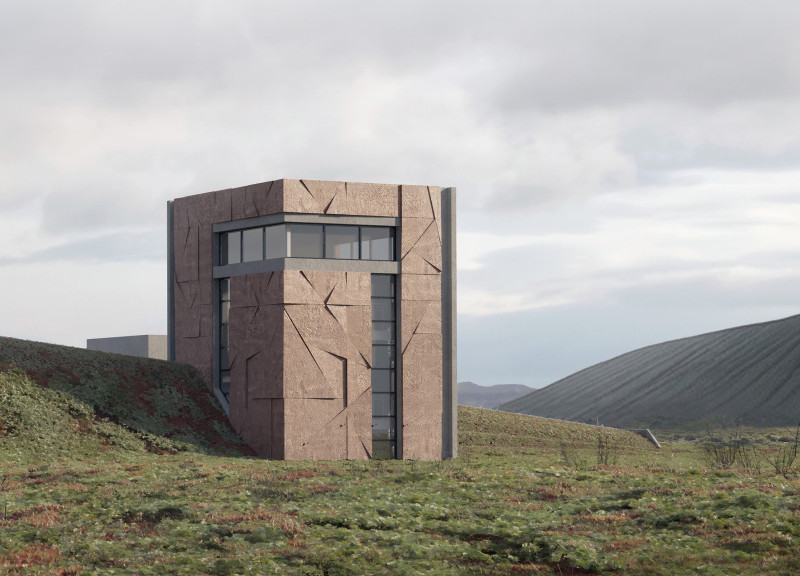5 key facts about this project
The Volcano Museum is located in Iceland, near significant geological landmarks such as Reykjahlíð Airport and Mývatn Lake. It serves as a cultural and educational space dedicated to the region’s unique geological history. The design concept incorporates a significant underground component, allowing the structure to connect deeply with the volcanic landscape of Iceland.
Conceptual Approach
The design explores the idea that the appearance of a building does not always reflect its deeper meaning. The museum has a closed exterior, which invites curiosity and encourages visitors to explore its interior. Most of the museum is built underground, with parts of the building rising above ground to resemble hills and towers. This design helps the structure blend into its natural surroundings, enhancing the connection between the museum and the landscape.
Spatial Configuration
Inside the museum, the layout is designed to allow for free movement and exploration. Instead of conventional exhibition halls, the space includes four distinct exhibition types: CAVE, LOOP, ALLEY, and FOREST. Each area features unique floor patterns and design elements that define the separate zones while offering a cohesive overall experience. This approach allows visitors to engage with the stories of Iceland’s geology in an interactive way.
Functional Spaces
In addition to its exhibition areas, the museum houses various functional spaces. These include a booking office, a recreation room, a restaurant, and support areas to assist visitors. The arrangement of these spaces meets practical needs while promoting social interaction. This balance ensures that educational experiences are combined with opportunities for relaxation and conversation.
Visual Connections
A notable aspect of the design is the alignment toward Hverfjall Volcano. This choice creates a clear visual link between the museum and the striking geological feature nearby. As visitors arrive, they are directed toward the volcano, establishing an immediate connection to the surrounding environment. This design element enhances the sense of immersion in the volcanic landscape and deepens the visitor experience.
Rising above the ground, the museum’s structures evoke images of natural formations. Their gentle curves and organic shapes create a pleasant contrast against the earthy tones of the landscape. Such details invite admiration and reflection, engaging visitors both visually and intellectually in the museum’s mission.






















































